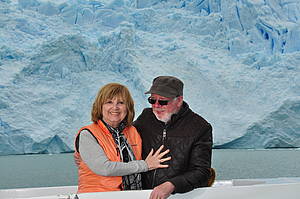Argentina - Chile 2016
Journey to Argentine and Chile
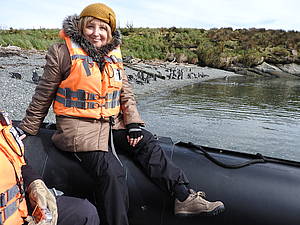
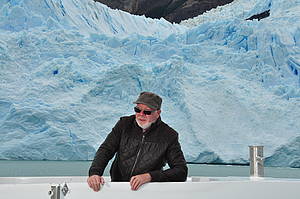
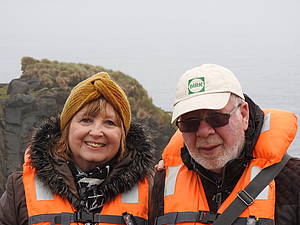
What comes into your mind when someone says Argentina?
Probably football, tango, steaks.
When it is about the names, in the first place Evita and Diego Maradona, maybe the tennis player Gabriela Sabatini. World-famous writers as Jorge Luis Borges and Julio Cortazar, a singer Carlos Gardel, who made Argentine tango famous. And Chris de Burgh.
And lately - the current Pope Francisco, who is very much loved.
Few people realize that Che Guavara also grew up in Argentina. Just as few people know that he stayed for some time in Prague. His stay has been described in a book by Abel Posse, Cuadernos de Praga. Posse served as an Ambassador of Argentine in the Czech Republic in the middle nineties and describes the Prague atmosphere in the mid sixties in a very interesting way.
History in a nutshell
The indigenous population of Argentina was at the time when the first Europeans appeared in their territories at the level of Stone Age - it was no advanced civilization like the Incas in Peru or the Aztecs in Mexico.
The first European to explore the coast of Argentina was Juan Díaz de Solís. In 1514, this piloto mayor (highest helmsman of the Spanish Royal Society for American business) was charged with finding a route from the Atlantic Ocean to the South Sea. In 1516 he achieved a wide estuary of the Río de la Plata (Paraná), which he regarded as the passage he looked for. But when he went against the stream, he was attacked by Indians and killed. His three ships returned to Spain in the same year. The real sea route to the Pacific Ocean was discovered only in 1520 by Fernao de Magalhaes, or Magellan. Or at least it is the first reliably documented passage, as there are some indications that others did it before him. The successful establishment of the city of Buenos Aires at the second attempt in 1580 began a successful phase of the Spanish colonization, which proceeded slowly.
After an unsuccessful invasion of British troops in 1806, the movement for the independence against Spanish Viceroyalty of the Río de la Plata peaked in 1810 into open rebellion against Spain which was weakened by internal rifts. During the fighting for the independence of Argentina, Chile and Peru, led by General José de San Martín, Paraguay, Uruguay and Bolivia broke away from the Viceroyalty and created independent states. Argentina's independence was declared on July 9, 1816. In 1822, José de San Martín met another important personality of the Latin American struggle for independence, Simon Bolívar. It remained secret what they talked about, but after that San Martin stopped his army and left the territory of Upper Peru, now Bolivia, to Bolívar.
In the second half of the 19th century the influx of European immigrants to Argentina intensified. Together with the construction of railways and the development of other sectors of agriculture, especially livestock and wheat growing, both for export, the immigrants were the cause of the great economic prosperity. This is the only period of 50 years starting around 1870 when the country was really prosperous – it is considered a golden age of Argentine and it was finished by economic crisis of late 20s, early 30s of the 20th century. In the following years, conservative landowners and military circles took over and civil governments alternated with military ones. The military coup of General Uriburu in 1930, under conditions of the global economic crisis and dissatisfaction of the majority of the Argentine population that supported it, ended up also the liberal era of the country. In the rest of the twentieth century there were more generals (14) at the head of the state than civilians (11).
The movement of Peronism originated from this situation. At its forefront there was a contradictory personality of President Juan Domingo Perón (became president in the years 1946-1952 and 1952-58). Perón created a theory called "justicionalismo" which should lead to a fairer society, a kind of third way between capitalism and socialism. In practice, the policy was based on widespread nationalization, a support to the efforts of trade unions to improve the social situation and the extension of political rights of the workers and the poorest peasants. At the same time, the movement was strengthening presidential authority and anticlericalism (Argentine government was therefore excommunicated by Pope Pius XII. in 1955). The methods of governance, however, were very much reminiscent of the dictatorship. After the defeat of Nazi Germany many Nazi bosses fled to Argentina, for example Adolf Eichmann and Josef Mengele. Nobody checked on their past and Perón himself had a secret affection for fascist ideology. However, Perón´s enormous popularity was owed very much to his wife, Evita Perón, because people saw in her somebody who really cared for them (unfortunately she died in 1952 at the age of 33). The Peronist conflict with the Catholic Church over the planned liberalization of divorces became the pretext for one of the next military coups. Perón left into the exile in Madrid at the invitation of General Franco in 1955.
Consequently, Argentina had faced recurring political and economic crises, accompanied by several military coups and terror by military juntas (1955, 1966, 1971). In the interim periods, the elected governments which came into power were always so weak and helpless towards the immense problems that they were soon replaced by junta again. Finally, Juan Domingo Perón was asked to return from the exile and became president of Argentina for the 3rd time in 1973. His return belongs to one of the ironies of the Argentine history and is at the same time the evidence how easily masses can be manipulated. It was mainly thanks to the leftist guerrilla movement that enabled his return, the same circles, recruited mainly from students, who supported the Catholic Movement in 1955 and by that helped to remove Perón in the first place. However, after his accession to the presidency, Peron died the following year. The cycle of alternating civilian and military governments that all defended only their diverse interests, whilst proclaiming the necessity to “save the nation”, could not be broken. Peron's third wife Isabel, who succeeded him as the elected president, was deposed by the military in 1976.
This period is considered to be among the worst ones in the history of Argentina and Argentines call it “Dirty war” (La Guerra Sucia). It manifested itself by violence and terror starting at the early seventies until 1983. In the early 70s kidnappings and murders of high-ranking military and police officials by Montoneros guerrillas (Movimiento Peronista Montonero) or the Popular Revolutionary Army (Ejército Revolucionario del Pueblo ERP) took place almost every week. Attacks on civilian and governmental targets were also no exception, for example, there was a bomb attack carried out in the Sheraton hotel in Buenos Aires in 1972 and an attack in the theater in the city center in 1975. When Isabel Martinez Peron was forced out of the office, Jorge Rafael Videla became a head of the military junta. He was later replaced by Roberto Viola and Leopoldo Eduoardo Fortunato Galtieri. The junta declared the so-called "process of national reorganization", on the basis of which it engaged in unlawful arrests, torture, killings, "disappearances" and the systematic persecution of thousands of leftist activists, including trade unionists, students, journalists, Marxists, Peronists and all their sympathizers. The actions of security forces and armed groups were carried out hand in hand with the similar actions of other dictatorships in South America of this time under the auspices of Operation Condor, supported by the CIA. The total number of dead or "disappeared" in Argentina has been estimated at between 9000-30 000 persons.
The Junta regime was terminated in 1983 after Argentina's defeat in the war with Great Britain for the Malvinas (in the year 1982 – it is not recommended to call these islands in Argentina by any other name, certainly not Falkland Islands, too many young men died in the war and it had left too many unhealed scars. I do not need to say that as all wars for the territories, also this one was useless and tragic). Raúl Alfonsín became a president of the country (he later started to be considered an icon of restored Argentine democracy). His task was difficult. He wanted to punish the culprits of the killing based on the “process of national reorganization” but there were too many people involved, so he limited the court trials only against those up to the rank of colonel, all the others were just "following the orders". Mothers of the Plaza de Mayo, wearing a white scarf, a symbol of the movement, have been gathering every Thursday in front of the Presidential palace. They demanded justice for disappeared and tortured members of their families, but there was an opposition to the process of punishment of all the culprits from various political parties and sections of the population. However, the organization of Mothers of Plaza de Mayo is active until these days.
This overview of the history of Argentina might seem too long for some readers, but I have realized what a simplified version I have elaborated. In a book which I have just finished Argentina:the Rise and Fall by John P. Connor you can read the full story of the nation which seems to have its "star hours" behind them.
Presence
After the collapse of the economy in 2002, Nestor Kirchner assumed the position of the President and led the country out of the worst crisis. His wife, Cristina Fernandez de Kirchner, the second woman elected to the presidency in Argentina, followed. She performed the function for two periods 2007 - 2015, but is currently facing corruption charges. The current president Mauricio Macri was elected in December 2015. The Argentineans do not reflect either positively or negatively on him so far, they all say he apparently needs to be given more time.
Life and people
Florencia, our guide of Buenos Aires, is a very busy woman. The inflation in the country is about 40%, general wage increase takes place once every year, but as it happens, the wages always lag behind price increases. Therefore, Florencia has three jobs. In addition to the work of tourist guide, she gives lessons in belly dancing (not in tango J) and works in an office on some evenings. Her husband works in IT company. They have one child, who is being taken care of by a grandmother. They want to take a mortgage on a small apartment about an hour away from the city center so that they could afford it, but because of inflation, mortgage rates are enormous. Florencia is well educated, speaks good English, she undertook a journey to the east and west coast of the US, and when she was twelve, she was with her parents also in Europe. But she did not say much about the modern history of the country – later on we found out that it was a standard phenomenon among all guides.
The state health and education systems are free, transport is very cheap. The average salary is about 700 USD. When people think that it goes too far and that the prices are too high and wages too low, they strike. At the time of our stay there was a demonstration of teachers in front of Presidential palace just when we were there. But Florencia commented the situation quite skeptically: “They will strike for two or three days, then they return back to work and nothing would change.” It is also no good with the freedom of press. When journalists would like to write something very critical about the president or government, it would not be published. If some courageous publisher would publish such critical articles, the government would close his newspaper. To my question: So, you have no freedom of press? Florencia simply replied: NO. When we finally sailed four days on the ship, stewards and guides also explained to guests that they are instructed not to discuss religion and politics. I must say that as a guide in Prague in the seventies I discussed with tourists about politics all the time, I answered all their questions as best I could, and I also questioned them constantly.
In each country, there is a difference between life in the capital and in the rural areas. But the gap in opinions, way of life and standard of living in Buenos Aires and in the provinces is enormous. Historically, this has always been the main cause of unrest, rebellion and bloodshed in the civil wars, because so called "Federalistas" in the provinces did not want to be controlled by the central government and "Unitarians" of Buenos Aires saw the only hope of advancement and promotion of liberal values in the centralization and leading role of Buenos Aires.
There are differences in price level between the city and the provinces but big differences can be also found within Buenos Aires. We enjoyed the best lunch of our stay at the restaurant on the river bank, recommended by Florencia. It was situated on the promenade where the local elite was going out for a walk. The restaurant had first class service and the meals were presented with a lot of fantasy. A little starter from fruit de mer and big selection of various breads was followed with a delicious beefsteak with baked potato and spinach and accompanied with the excellent red malbec wine. Coffees and teas could be ordered from the extensive menu of couple of pages and were served not only with a little sweet, but also with two types of local grapa for a better digestion – so we were told. However, price for this lunch was 2000 Pesos which is around 120 EUR. But it was perfect, the view, the food, violet jacaranda trees blossoming everywhere (it was late spring in Buenos Aires). 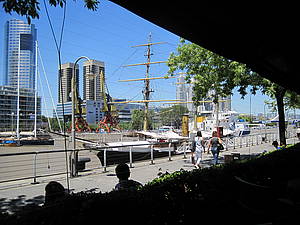
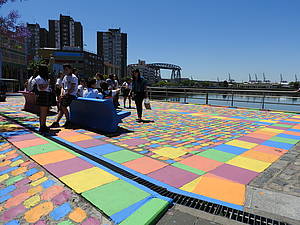
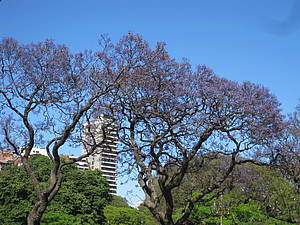
The next day we went for lunch to a small cafe at the corner, we ordered local fish with mashed potatoes and a small glass of white wine (they brought us a big ones, full up to the brim). The price of lunch for two people was 340 pesos, or about 500 CZK. I just want to say that this restaurant was downtown as well, on the main boulevard 9 de Julio (the widest avenue in the world, 20 lines in both directions, plus a strip of greenery in the middle. Its width is cca 110 m, and it takes you 3 traffic lights before you cross it. In the middle of this Avenida there is an Obelisk, one of the symbols of Buenos Aires).
Roads in Argentina are usually well maintained but the same cannot be said about sidewalks, so you should better walk with head down to avoid stumbling or falling into a hole. At the traffic lights, the outlines of a little man figure are either red or white (not green). The condition of the toilets is mixed, some are good, some bad, but they are always well marked with symbols as well as verbally. Besides the usual "damas" for women, we found several places with a reference to women as "lindas" (beauty) and for men "feios" (ugly), which I found funny. 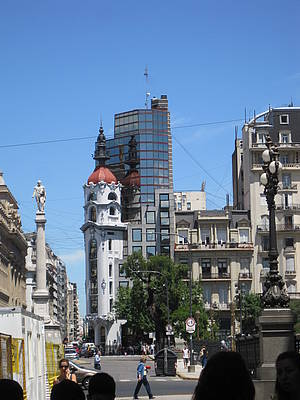
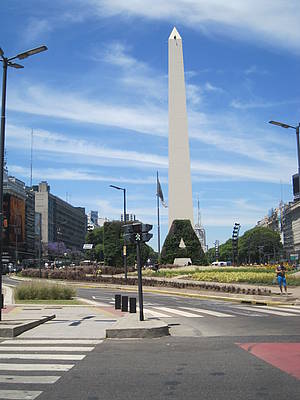
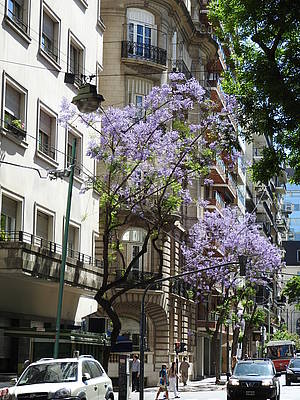
Throughout our stay in Argentina we have always felt safe. We were just instructed to observe normal safety rules which are common in the cities (nobody mentioned the possibility of cutting off fingers because of the rings on them or snatching chains as it was in Rio de Janeiro). During a trip to the estuary of the Parana River we watched a performance of children outside their school in a small town (particularly good was a little six-year-old violinist). The safety of children and their parents was supervised by two policemen but otherwise it was also a quiet peaceful place.
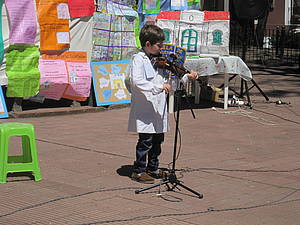

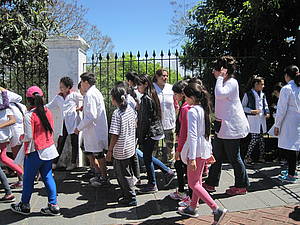
The same peace breathed from the islands of Tiger Delta, consisting of thousands islands which do not have any access to the main land but boat. the houses are being more and more used as weekend houses, but there are also still many people who want to enjoy this "splendid isolation" without internet permanently.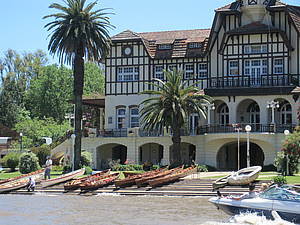
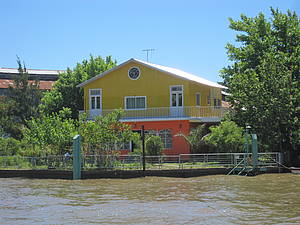

However, when we went down the main street of Buenos Aires on one of the warm evenings (we had a beautiful weather all the time, mornings and evenings with around 22 degrees, at noon maximum of 29 degrees) - the picture of this avenue changed. In the daytime, it was full of people who went to work, to restaurants, to do some shopping or just for a walk. In the evening there were beggars sitting on the pavements, the passageways were full of men who did not inspire too much confidence or of drunks. (I just want to note that the number of beggars was not bigger than in many European cities). It did not feel that there was an excessive cops presence in the streets (which is sometimes the case in countries with authoritarian regimes ). Certainly they were not roaming around in their cars with roaring sirens as they do in Prague.
Later on, on our trip to the interior, we went through two points of control on the way from San Juan to Mendoza (police opened the boot). Generally the presence of police substantially increased, we saw at least twenty police patrol cars at a relatively short distance of 160 km.
Buenos Aires
Presidential Palace in pink (Palácio Rosa), from which Evita used to speak to people. 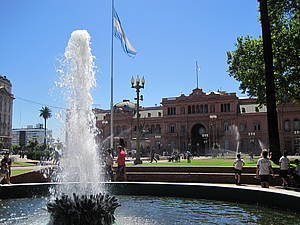
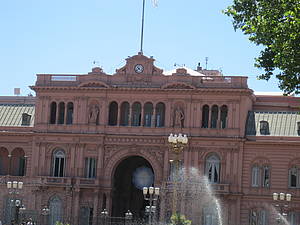
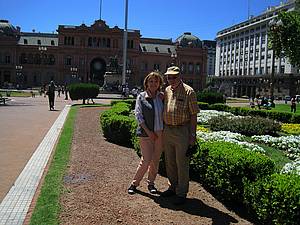
Recoleta Cemetery. The tombs are big as houses. The resting place of Evita, but she was not buried here straight away. When Juan Perón was forced into exile, her body went lost. The dictators did not wish to be reminded of her as a public icon. Then the body was transported to Italy and later on to Spain where Perón was staying with his third wife Isobel. It was returned to Buenos Aires in the year 1973 when Perón was back as a president for the third time. Only a year later she was placed into the family mausoleum in Recoleta. We had been walking around the cemetery looking at the artful tombs and observing cats running around and eating food from the prepared bowls. The guide was telling us some horror stories associated with the buried people.
One of the expensive tomb with a statue of a girl in life size reminds of Rufina Cambaceres. She came from a wealthy family, but her father died when she was four years old. When she reached the age of 19, she became a very beautiful woman. Once she was preparing herself for a dancing ball, but suddenly, without warning, fell to the ground and died. It is not clear whether the message about her boyfriend´s infidelity contributed to her death. Three doctors proclaimed as the cause of death a heart attack. Rufina was placed into the coffin and buried in the family tomb. A few days after the funeral, the undertaker discovered that the coffin moved a little from its original location. He feared potential robbery, so he opened the coffin and found a worse thing: Rufina lay in a coffin with her nails broken and bloody as she tried to get out of the coffin – now she was definitely dead. Doctors explained that Rufina suffered catalepsy, which is the same explanation used for the burial alive by Edgar Allan Poe. The guide told us that the story might be an "urban legend," but the fact is that Rufina died in 1902 and that her mother let built a wonderful Art Nouveau tombstone with her statue. 
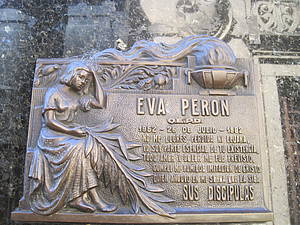
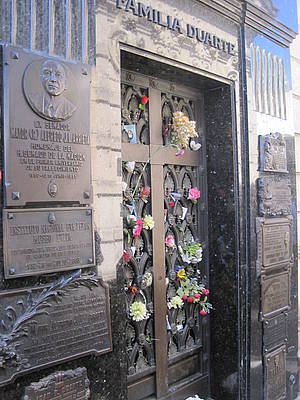
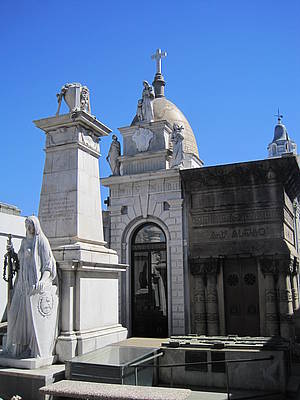
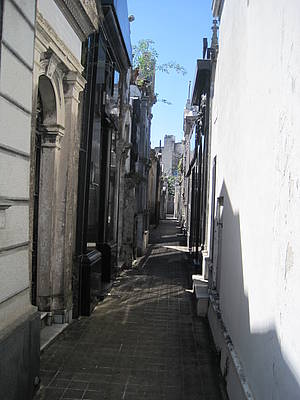
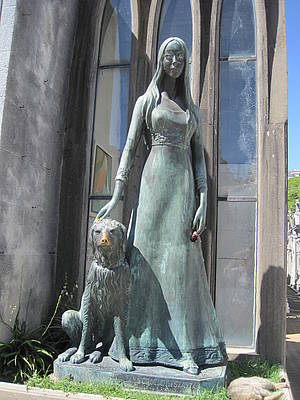
Caminito Street is a little bit reminiscent of Golden Lane in Prague, it is a meeting point of various performing artists. Couples dressed up for a dancing tango want to give a chance to tourists to try it – we did, although only for the photo purposes. However, in the evening we were in the theater Esquina Carlos Gardel, for a show with a live orchestra and dance ensemble, who showed us what tango really means. 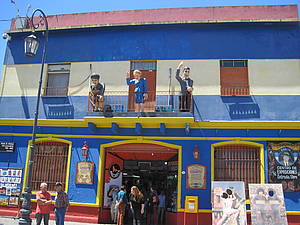
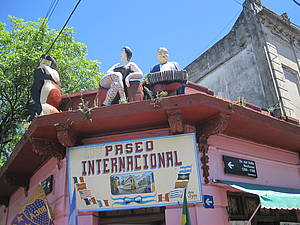
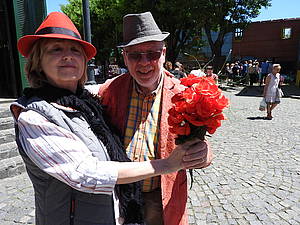
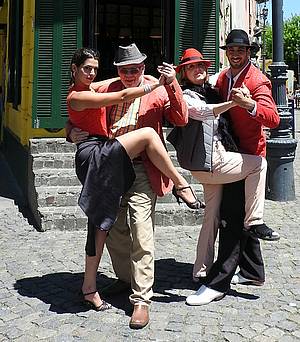
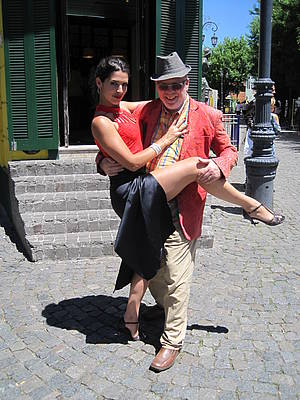
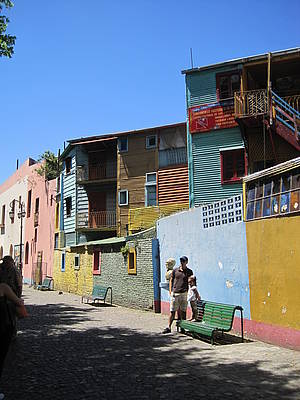 Metropolitan Cathedral, is the main Catholic Church in Buenos Aires. In 1880, the remains of General José de San Martín were brought from France and placed in a mausoleum in the church. The black sarcophagus is guarded by army members and also by three life-size female marble statues representing Argentina, Chile and Peru, three countries liberated by the General. The current Pope Francisco used to preach in this Cathedral.
Metropolitan Cathedral, is the main Catholic Church in Buenos Aires. In 1880, the remains of General José de San Martín were brought from France and placed in a mausoleum in the church. The black sarcophagus is guarded by army members and also by three life-size female marble statues representing Argentina, Chile and Peru, three countries liberated by the General. The current Pope Francisco used to preach in this Cathedral. 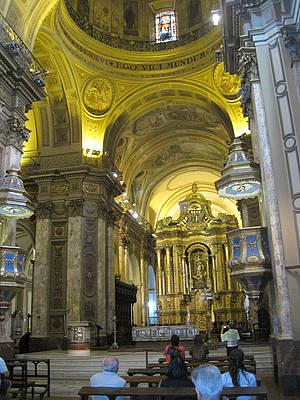
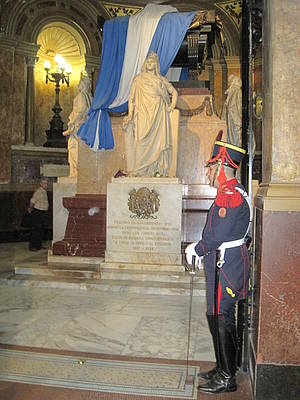
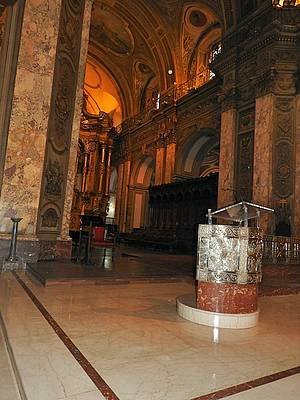
Lucie inspired me that I should try to go in the steps left in the city by writer Jorge Luis Borges. But there is only one museum in Buenos Aires, placed in a department store, reminding him. As it did not awake my curiosity too much, we went at least to Café Tortoni, lavishly furbished in Art Nouveau style, with three of its most prominent guests in wax in the corner, a writer Jorge Luis Borges, singer and tango dancer Carlos Gardel and poet Alfonsina Storni, and had a coffee at "his" table. All books by Borges, including the famous short story The Garden of Forking Paths ( "El Jardin de que se Senderos bifurcan") and the novel Aleph were for sale in the Buenos Aires biggest bookstore housed in the former palace of El Ateneo Theater, also an Art Nouveau building on one of the main streets. 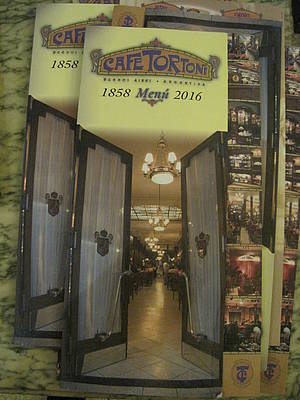
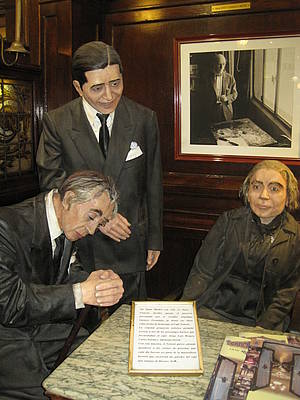
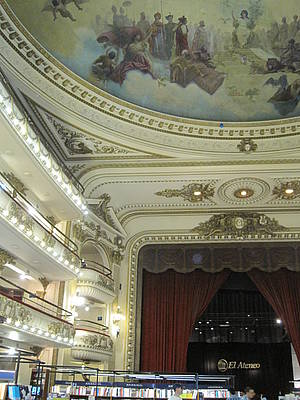
Florencia said goodbye to us with a kiss on the cheek. Argentineans are touching each other´s cheek when they meet or say good bye just once - unlike Europeans who give cheek to cheek kiss twice or the French, who run the same ritual three times. In Argentina the ritual takes place mostly between man and woman and between women even if they do not know each other too well, it is like shaking hands, so that also George got a good bye cheek kiss from Florencia.
Mendoza
Our next stop was a city under the Andes, associated with the cultivation of wine, Mendoza. We were unlucky as the airport in Mendoza closed for repairs for 3 months exactly in the time of our stay. We had to fly to San Juan. Argentina Airlines officially allowed only 15 kg luggage for domestic flights but the check-in clerk did not blink an eye over a few extra kilos – fortunately it was the same case during check in for all following domestic flights when our suitcases were gaining on weight. (In Europe or in India, the airlines would be only too happy to cash in). San Juan flight lasted nearly two hours and then it took us by car to Mendoza´s hotel Amerian another two hours. We got a beautiful suite which compensated us for a tiny room in Buenos Aires where we could hardly turn around. The first day in Mendoza was spent by using a hop on – hop off double decker ( in Spanish "sube y baja") and exploring the city. On both sides of the streets there ran deep channels for rain water collection - an ancient system which the locals had learnt from the Peruvian Incas hundreds of years ago. Streets were lined by acacia and plane trees, their crowns joining over the road and creating a perfect shade. The public transport means included also an old tram and trolleybuses.
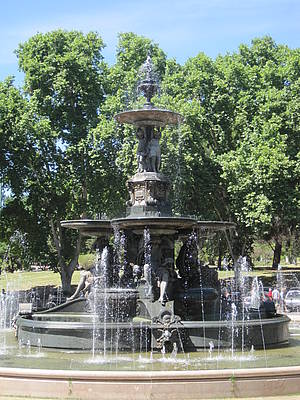
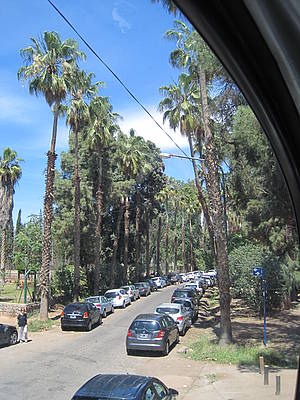

The 393 hectare park San Martín has 34 sculptures and palms decorating the paths, a rose garden, botanical and zoological gardens, many playgrounds, tennis and golf clubs, a stadion Malvinas, and a pond for regatta. The inhabitants of Mendoza were enjoying their Sunday and picknicking when we reached.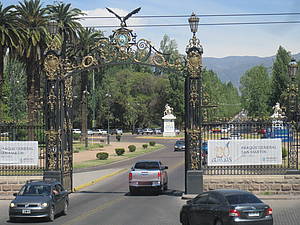
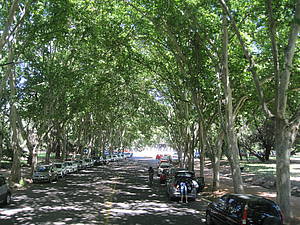
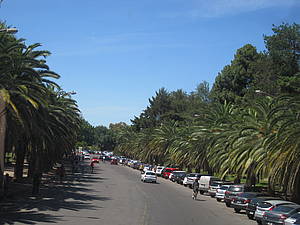
We had not exchanged a sufficient amount of the Argentinean peso and as it was Sunday all exchange
offices were closed. However, one is always opened – the one in the local casino. The cashier pocketed five hundred euros and began counting chips - we had to point out quickly that we wanted cash. Casino halls were packed by people of all ages sitting at the machines, tempting their fortune and losing.
In the evening we sat outside in the restaurant La Lucia and for the first time in my life I ate goat meat, it tasted very good (but I like lamb and mutton, and the taste was similar). Several double deckers passed around with young people dressed up and cheering – we were told that they celebrated the successful passing of exams. The entire Plaza de la Independencia was filled with people, stalls, bands, lights, there was a lovely atmosphere. Overall, we felt as if we were very close to Europe (the atmosphere in Africa or India is completely different).
The next day, there were three wineries on the agenda: Dante Robino Winery, Luiggi Bosca Winery, and Senetiner Winery including lunch. At the background of all wineries we could admire the Andes. Dante Robino is a smaller winery with traditional technologies, Luigi Bosca is more experimenting with mixing various kinds of wines, but all the wines were excellent. Wines in Argentina do not collect any tax if the alcohol content ranges from 11.5 to 15 percent. However, sparkling wine is particularly loaded with a special export tax. Luiggi Bosca´s sparkling wine is produced exactly according to the same recipe as French champagne, but of course they are not allowed to call it Champagne. 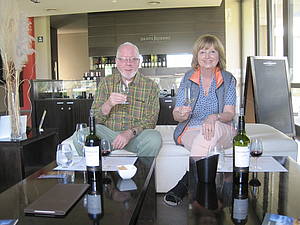
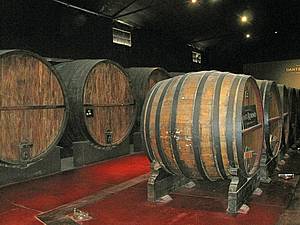
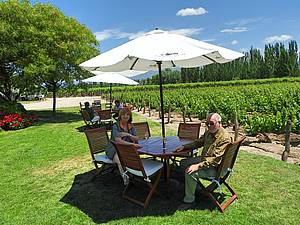
Lunch was good, too rich, when we thought it was over, the chef brought more and more different kinds of meat for tasting, of course complemented with wine. Meanwhile, we chatted with staff and listened to their stories. The driver came from Brazil, worked in Italy, then in Switzerland. Later on he managed an ice cream parlor in Frankfurt where he met his future Argentinean wife, they have one daughter. They returned to South America and although they divorced, he decided to stay in Argentina. The guide in the winery told us that he had to try very hard in his life because his parents did not have money for private schools. When he managed with 12 years to get a scholarship and go to a private school, he was in the same class with children who had already studied English for 7 years, and he had to catch up as there was no English in his state school. He could do nearly nothing else than study English in the first year of his new school, taking private lessons and cramming vocabulary. He spoke excellent now and said that any job he ever had was because of his knowledge of English. He appreciated that nowadays also state schools started to teach English. It's about high time, because the number of Argentineans in services, who speak English, is quite small. It did not matter to us with my Spanish but it is certainly not good for development of tourism and for better chances of youngsters in the globalized world.
Aconcagua
The next day we went to the highest mountain in South America, Aconcagua in the massif of Andes. There were breathtaking views all the way wherever we looked. Under the fierce winds we have taken up by funicular to Los Penitentes to get the first touch of Andes (I think that in our country they would not run the funicular in such a wind). Bridge of Incas - La Puente del Inca - followed. It is a bridge created by nature over the river Vacas, formed by interaction of two extremes - ice and hot springs. Sulphurous water colored the formation into various shades of yellow and orange. Charles Darwin made drawings of this bridge in the year 1938. At the beginning of the 20th century this was one of the last stations of the trans Andean railway – the train proceeded to Chile by a long tunnel under the Andes. The railway contributed at that time very much to the development of trade between Latin American countries. Argentina and Chile, however, had the long-standing dispute over the division of the southern part of the continent, Patagonia, accompanied by wars and not kept treaties. To help to solve the last outburst of the conflict, even the Cardinal from Rome had to reach to prevent another war between the two Catholic countries. It is said, that Chileans and Argentineans stopped liking each other because of that dispute and consequently stopped using the train for visits. Because of that the train was used only for transporting goods. But when the road A7 was finished connecting the Atlantic and Pacific coast across the Andes, the railroad became obsolete, traffic was completely stopped and since then the rails have been disappearing under overgrown grass. However, when we discussed the problem of Patagonian border on spot with the locals, they told us that they had no problem whatsoever, it is only Buenos Aires and Santiago de Chile governments who are getting excited about it. On our way to Aconcagua we could see condors, rheas (smaller ostriches) and small llamas, which are called guanaco. Otherwise, a lot of beautiful horses, cows and sheep everywhere. Many pumas live in this region as well, they have no natural enemies, only humans, but we have not seen any, as they are nocturnal hunters. In addition to impressive Jacaranda trees, we also saw significant Ombu tree - Phytalocca dioica - which grows only in certain areas of Argentina and nowhere else.
Then we reached the foot of Aconcagua (6950 m). We arrived in the valley at an altitude of about 3,500 meters and made a short slow ascent to come closer to the best place for the visibility. It was not a long walk, but even so it was quite exhausting as the air at this altitude was already much thinner. But we were awarded by the magnificent view of this mighty mountain.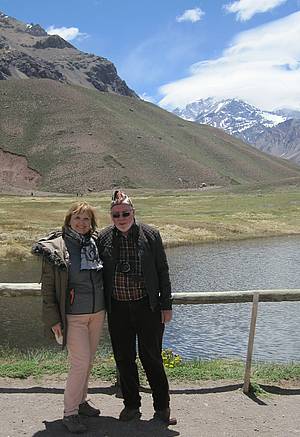
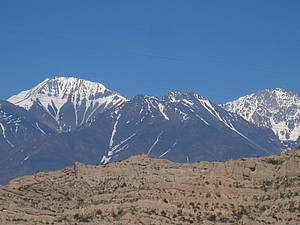
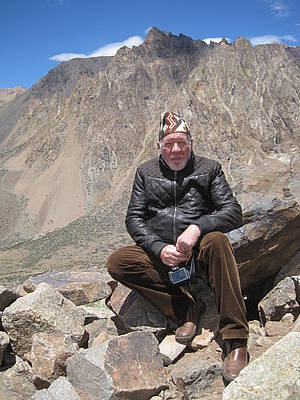
El Calafate
The next day was dedicated to travel to El Calafate. We got up at half past three in the morning, the car took us back to the San Juan airport and we flew via Buenos Aires to El Calafate. The small town is situated quite in Patagonia quite far to the south and it reminded us of the Wild West town from the old movies. We dined at the restaurant where they had an open fire with lambs and kids being grilled over it. Our hotel was named Kosten Aike - it means in one of the aboriginal languages Quencha Home of Winds. (or something like Wuthering Heights)?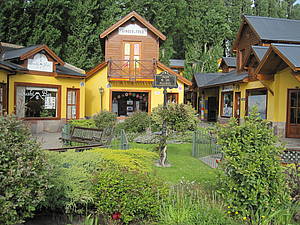

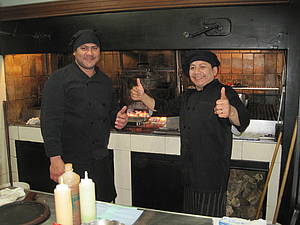
The main excursion was a four-hour ride by a ship across the Argentina Lake to the glacier Uppsala and to the glacier floating at the straights of Spegazzini, which is 130 m high and 25 meters long. It was incredible to have glaciers in such an easy reach. The guides explained the geology of the region and also informed that these glaciers were shrinking.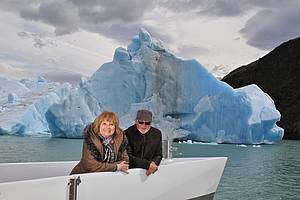
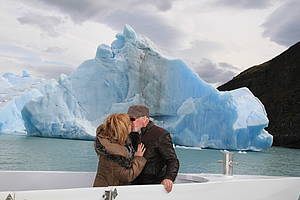
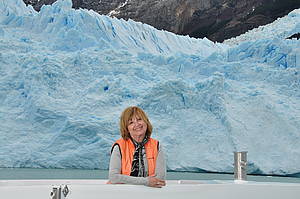
Chile
The following day was dedicated to the transfer to Chile. We drove by bus from El Calafate to Puerto Natales, which was five hours long trip across the Chilean border and then continued by car to Punta Arenas. Although the bus had two TV screens, both were just covered with a sign communicating in English and Spanish, that it was forbidden to take off the shoes. The roads were good, mostly flat, no mountain serpentines, we just headed along the Andes massif. On the Argentine side of the border, we only got an exit stamp, but on the Chilean side, we had to take out all luggage and get it through an X-ray check. However, for immigration in and out of Argentina, it was required to give a thumb prints and one´s photo taken. We were warned that no foodstuffs are allowed across the border, even one single apple could inflict penalties. This was the part of the journey which made me nervous long before we started it, as we were to be expected at the bus station in Puerto Natales by a Chilean driver. If he were not there, we would have been in trouble, because Chilean buses do not coordinate their schedules with the buses which reached Puerto Natales from Argentina, and we had another 240 km to Punta Arenas. However, everything turned out well, the driver was waiting, took us to the exchange office to get Chilean peso, and then to a restaurant where we had our late lunch (it was already 4 p.m.). Fresh shrimps and fish tasted well (Puerto Natales lies by the sea) and the waiter surprised us by his extreme honesty because he refused George´s disproportionate tip (we still had not the rates well fixed in our heads and have not realized that 40 000 Chilean peso is nearly 40 EUR). We stayed overnight at the Hotel Cabo de Horno. Punta Arenas is a small town founded in 1848, located at Magallen Straights, 53 degrees south latitude, and has about 130,000 inhabitants. The big Magellan memorial on the main square contains also a statue of young Indian, a symbol of Tierra del Fuego. If you touch his foot, it will bring you good luck in your travels and you will come back one day. His toes are glittering as everybody is touching. 
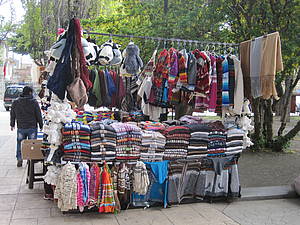
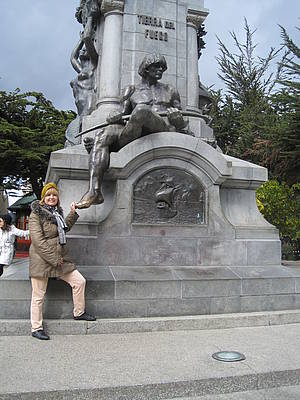
We started to think of Chile. What did we remember about this country from our school days? We all know that it is a narrow strip of land lying between the Andes to the east and the Pacific Ocean to the west. Compared to Argentina´s population of 43 million it has only 18 million inhabitants. We all remember president Salvatore Allende ousted by dictator Pinochet in 1973 and may be poet Pablo Neruda and singer Victor Jara.
History of Chile is similar to the history of Argentina and other South American countries. Chile announced its independence from Spain in 1818. The period of free trade and a flourishing alternated with periods of decline, periods of certain liberties with the government of dictators (the worst of them Pinochet, under whose reign - 1973-1990 around 40,000 Chileans were murdered, many more imprisoned and tortured. Today, Chile belongs to the most stable countries in South America with rapidly developing economy.
We came to Chile to undertake four days long cruise by the ship Stella Australis through the Magellan Straits, around Tierra del Fuego to Cape Horn. It is the only ship which is operating regularly in these waters. The registration started at 13.00. We left the luggage in the hall, got assigned a room and were left to our fate until 18.00, when boarding should start. In the instructions for the trip we were also told that all our clothes should be waterproof, which caused panic in our ranks and resulted in last minute purchase of waterproof gortex pants for both (we decided that George's leather jacket and my winter three-quarter length jacket must withstand the rain).
The region which we were entering is well known for storms and big waves. Therefore we bought in Dortmund on medical prescription a patch, which was supposed to be the best protection against sea sickness. It should be glued behind the ear 6 hours before the start of the cruise and last 4 days. We took out the patches, read about their side effects on the attached instructions for use and were horrified. It looked worse than side effects of antimalarial pills which we do not take from the same reason. And we would not be allowed a single drop of alcohol with this patch behind the ear! Therefore we decided to change our tactic to “let us wait and see”. At night we crossed the Magellan Straits and moved through a series of channels that are characteristic of southern Patagonia (our cruise was named "The fjords of Tierra del Fuego"). After dinner the ship began to be a little restless but not that much that it would make us sick.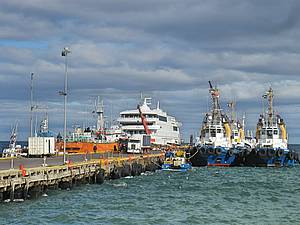
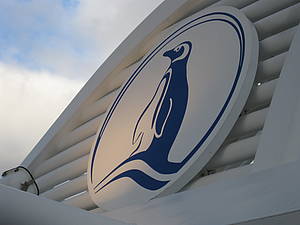
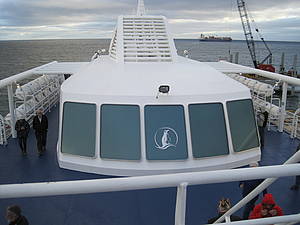
And we woke up to a beautiful sunny morning - the sea like a mirror, completely calm. The patches were immediately forgotten. As our guide said, the previous three weeks all voyages were marked by persistent rain and horrible weather. We had sunshine most of the time, we were just lucky.
We got instructions how to deal with a life jacket. Each of the jackets had also a tag with a number of our room and we had to hang it on the nail every time we left the deck. When we returned we picked it up again - it was a control if everybody is back on board. That made it possible to check that nobody was left behind in the Antarctic climate. Our room was on the top floor and had a huge window through which we watched the beautiful nature we passed. The excursions on land took place by special boats called zodiacs. The aim of the first trip to Tierra del Fuego was Ainsworth Bay. Our guide, a specialist on the geology and environment, told us all about the geological creation of this area and its flora and fauna. We saw seals lying on the beach, a flock of condors hovering over the Andes and numerous other aquatic birds. The excursion around the bay ended at a waterfall amid moss covered marvelous subpolar virgin forest – when we kept quiet, the silence was broken only by the drops of water. Some participants managed to take a picture of a fox, but she was very fast. 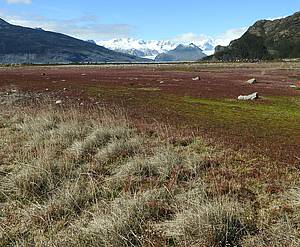
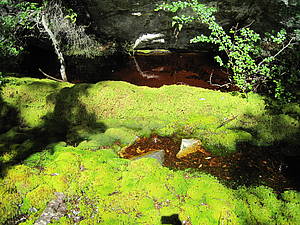
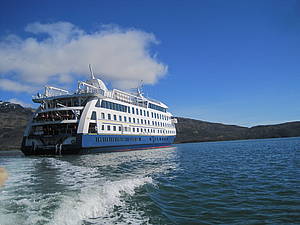
In the afternoon we went by zodiacs to the Tuckers Islets. There are over 4,000 penguins living on them, using the islands for nesting and reproduction. On other islets there are to be seen large numbers of cormorants and other birds (oystercatcher, Chilean Skuas, kelp geese, dauphin gulls, eagles, Andean Condors). During our cruise whales surfaced from the sea several times which caused everybody hurry up on board.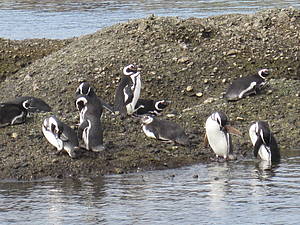
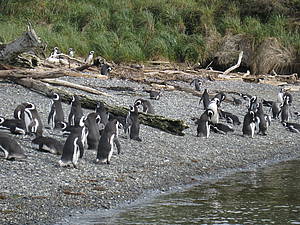
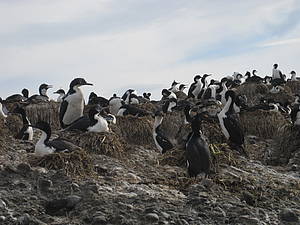
At night the captain reached the open Pacific Ocean, which, as it is known, is rarely really peaceful - well, we woke up at four in the morning feeling like in a swing. But fortunately the Captain soon headed into calmer waters. The morning was beautiful and sunny again – it was also pleasant to have a long day - the sun rose at 5:18 am and was setting in 21.32.
Meals were served three times a day and everything was delicious. Some waiters struggled a bit with English, but were always helpful. I liked our allocated waiter to call me Lady, as he was not aware that Madam would suffice.
In the morning we heard a lecture on Tierra del Fuego, its discoverers and former inhabitants. The best documented are Yamana (or Yaghan) tribes in the south. They were surviving in social structures based on individual families (each family had a boat which belonged to the woman, man was paddling). Under these extreme conditions they did not wear any clothes, they smeared themselves with a mixture of penguins´ fat and soil instead and were keeping up the fire burning in their boats all the time. It was also scientifically proven that their bodies had the normal temperature about 1 degree higher than it is usual in other races. A number of theories about the origin of these inhabitants exist, the best known comes from Czech scientist Ales Hrdlicka (they call him Alex here). He assumed that South American aborigines came from Mongolia, crossed the Bering Straits via an ice bridge which existed at that time about 13,000 years ago, and split – some of them went to Canada, some of them continued to the south of America.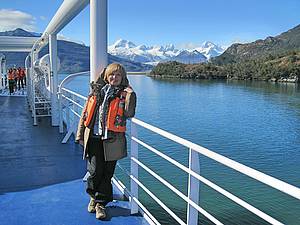
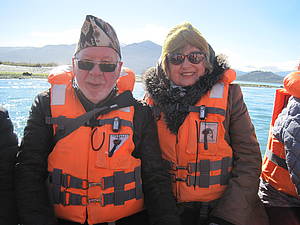
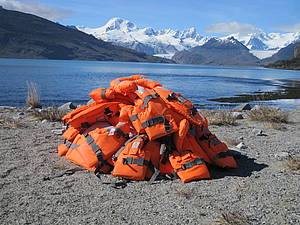
When the Stella Australis anchored in the afternoon, the zodiacs took us to the Pia fjord. We observed Pia glacier and heard his crackling, which culminated in a landslide of huge masses of ice into the sea. On the way back the engine of our zodiac stopped several times and we were tense if it restarts of if we will have to change the zodiac in the middle of the icy sea. But it turned out well and we could continue. Whilst everybody was on board, Stella Australis sailed into so called Alley of glaciers, which were named by countries: Germany, France, Italy and the Netherlands. As we passed the icebergs, waiters served the traditional drinks and snacks of the respective countries (Germany - beer and sausages, France - Champagne and cheese, Italy - red wine and pizza etc.).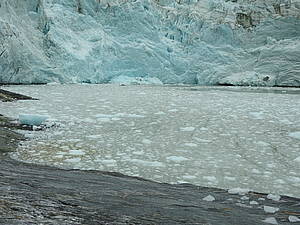
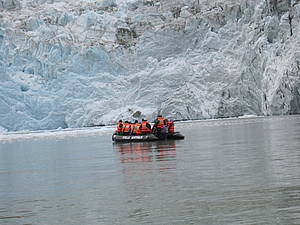
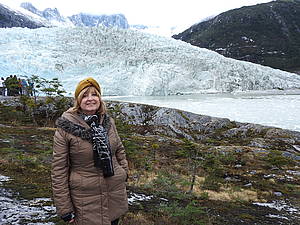
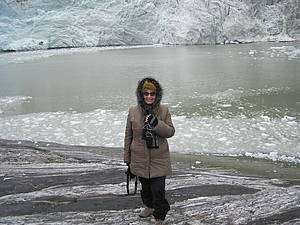
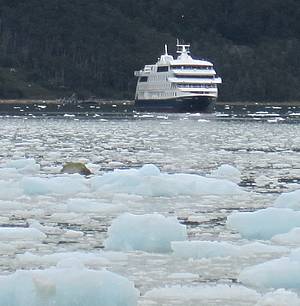
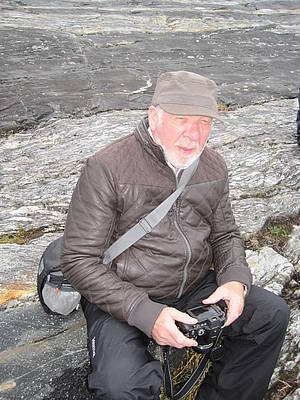
We were briefed on the history of Cape Horn and at the same time warned that sea might be stormy at night and that it was not sure if we would be able to land on this rock at the end of the world. The weather was at the moment fine, but the crew knew too well how quickly it could change. The possibility of landing depended on wind speed, wave height and the situation with tides around the island. But we were lucky again - we landed at 7.30 in the morning, it was very quiet, the sea level smooth, and although it was foggy and a little raining, the rain stopped very soon. Cape Horn was discovered in 1616 by Dutch naval expedition - it is 425 meters high rock towering above the stormy Strait of Drake. Chilean Navy maintains a permanent service at the lighthouse on the top. A navy officer, who has to have wife and children has to stay here for a year (the lessons for the kids are provided by parents). It is not meant as a punishment, many officers are applying, because it is obviously a very well paid job. I still think that one year is a very long time - just imagine to live one year on the rock. There is no lift, no funicular, so when we arrived, a Chilean ship had just delivered food and other things (“the changing the guard” took place, the previous officer ended his annual commitment, and the new one alternated him). The sailors were carrying a large number of boxes and crates on their shoulders from the ship upwards 425 meters. It amused me that even here the packing boxes were from bananas.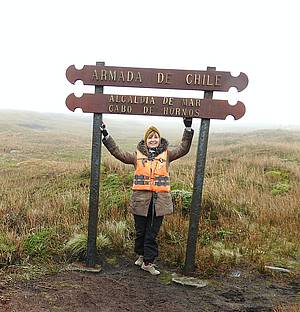
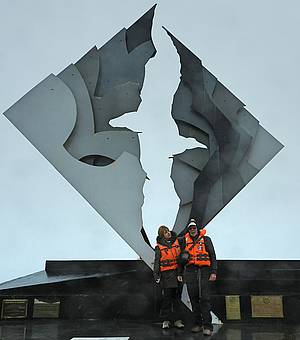
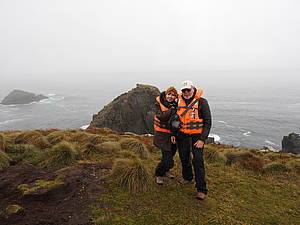
There is also a small chapel Stella Maris and modern monument with cut out silhouette of albatross dedicated to all those who lost their lives in these waters on the top of the rock. Overall, it's an incredible place - Cape Horn is 2000 km further south than Cape of Good Hope in South Africa. It is the southernmost place on earth and if the ship headed east or west, and circumnavigated the globe, it would hit nothing at all – no more land is simply there (not counting, of course, Antarctica).
The afternoon program included a visit of the information center in the old radio station and walk through the forest with panoramic views of the historic Wulaia Bay. Originally, this was the largest settlement of the indigenous Yamana. The bay was described by Charles Darwin and drawn by discoverer Fitzroy who passed it during his two trips to Patagonia on the steamer Beagle. The encounter of both cultures was as usually accompanied by many misunderstandings and tragic events. Fitzroy took with him four Yamana (Yaghan) tribal men to England for "re-education". They were dressed like gentlemen, taught the table manners and European ways and learned some English. FitzRoy took them back to Wulaia Bay on his second voyage. He believed that the reeducated Yamana could help to build a bridge between their people and the missionaries and assist them in their work. Nothing of that happened. The first thing the Yamana did after return was throwing away their clothes. They continued to stick to their nudity and their traditional way of life once again. The whole story took a tragic end some years later. The contradictions between the missionaries and Yamana escalated, until one day in 1859 Yamana killed all 8 members of the mission. The only one escaped was the cook who gave the testimony about the tragedy. The reason of this massacre could never be really clarified. French colonizers and explorers were doing not much better with the Yamana. A group of them was taken to France and exhibited as cannibals. The fact was that Yamana were not cannibals, but after being subjected to inhuman treatment and hunger, they ate also the raw meat of wolves which the French threw to their cage.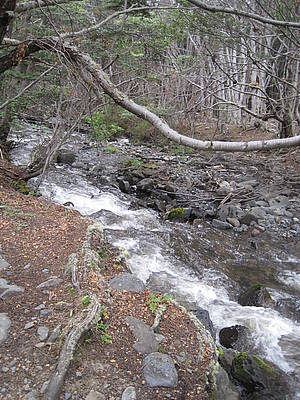
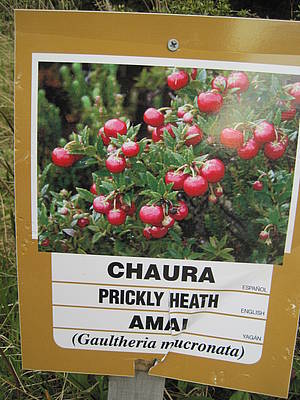
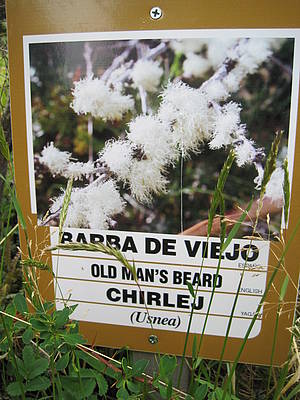
Wulaia Bay was magnificent and quiet. It was diffcult to imagine what tragic events were happening here in the past. We could see some plants and trees which were completely unknown to me, e.g. Prickly Heat, Old Man's Beard, Leaf Barberry, and the most interesting tree with edible fruit called Indian's Bread. 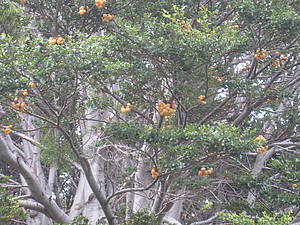
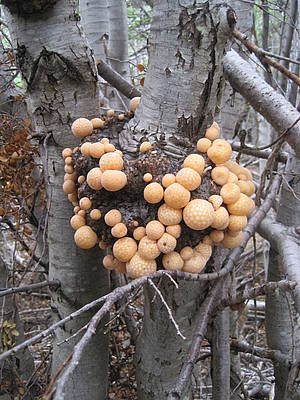
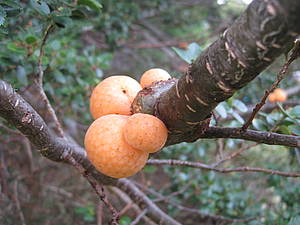
Our cruise ended in the Argentine town of Ushuaia, founded in 1884, a capital of the region. It was one of the places where the local Yamana met Anglican missionaries for the first time. We just walked in the streets, and had a look at the prison building transformed into a museum which was of no special interest to us. Some ships including our Stella Australis were still in the bay, waiting for their passengers for the way back to Punta Arenas. 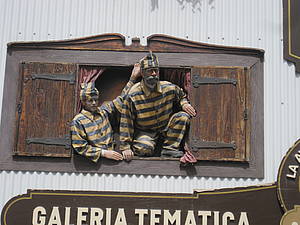
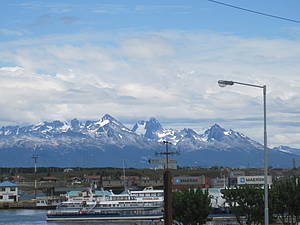
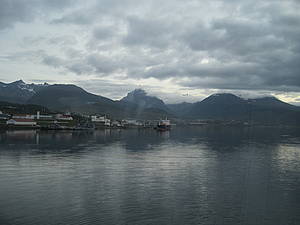
Our vacation was over, my dream to see the two major countries of South America fulfilled. It was again something completely different and exceptional - cities, mountains, glaciers, Argentinean cuisine and red wine, sonorous Spanish, lively tango ... It was wonderful. We obtained a diploma confirming that we had reached Cape Horn, the southernmost tip of the world. On the diploma there is a poem by Sara Vial in memory of sailors who died when sailing around the Cape. It contains a reference to the albatross, the mythical bird that brings good luck to sailors if they estimate him and a misfortune when they dare to hurt him (with reference to the Rime of the Ancient Mariner by Coleridge).
I am the albatross who awaits you
at the end of the world.
I am the forgotten soul of the dead seamen
who sailed across Cape Horn
from all the seas of the world.
But, they have not died
in the fury of the waves,
today they fly on my wings,
towards eternity,
in the last crevice
of the Antarctic winds.


